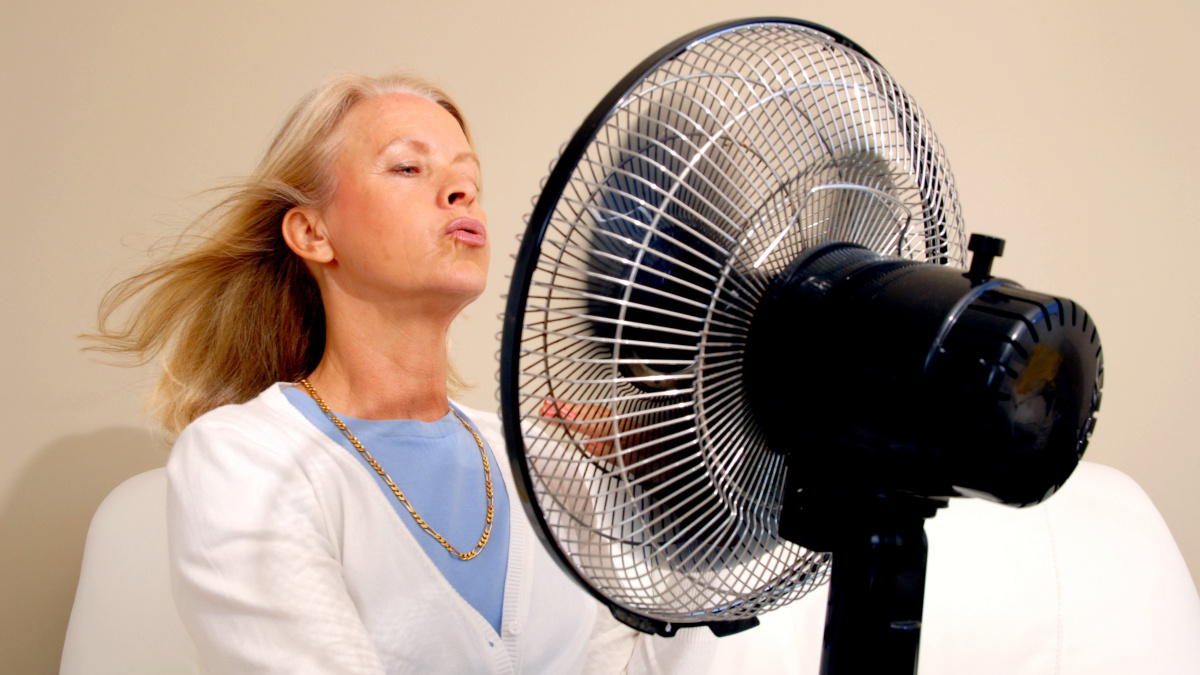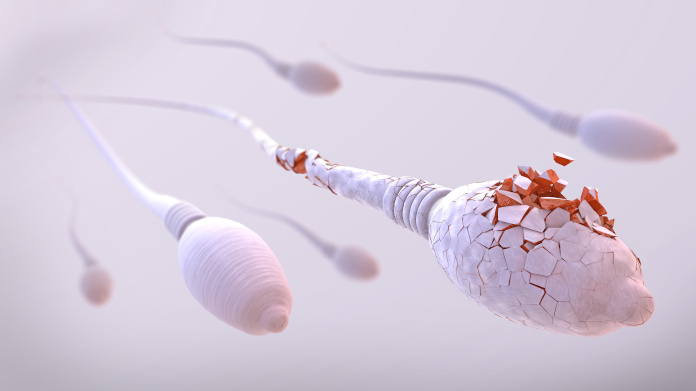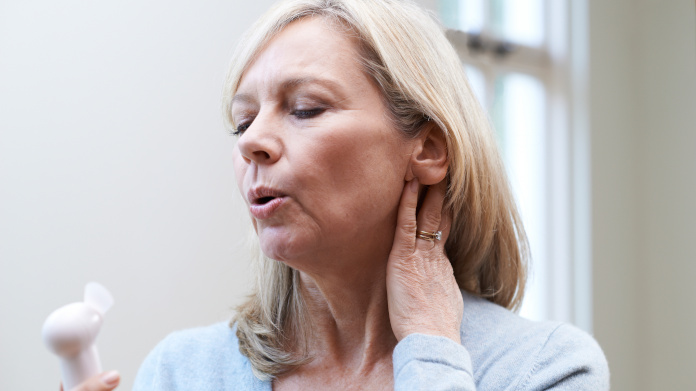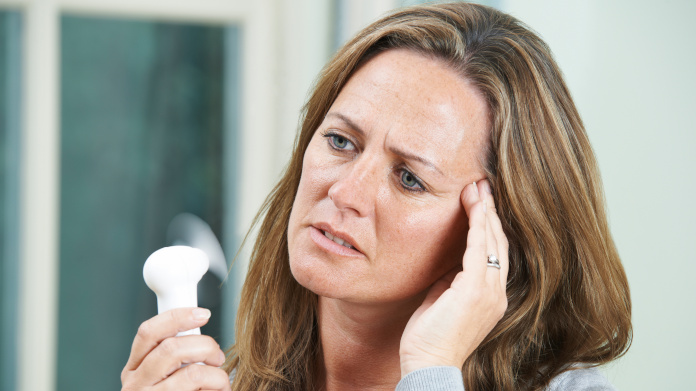
A hot flush (or ‘hot flash’ in the US), sometimes referred to under the umbrella term ‘vasomotor symptoms’, is a sudden, transient feeling of heat, most often felt in the upper body (the face, neck and chest).
Hot flushes can be mild, but they can also be very uncomfortable.
Specifically, the common symptoms of a hot flush are:
Both the frequency and intensity of hot flushes vary over time and depending on the individual. An episode can last 1-2 minutes, or sometimes as long as 5 minutes.
The potential causes of hot flushes in general include side-effects from certain drugs, thyroid problems, anxiety, etc.
There are also factors that can intensify these vasomotor symptoms:
In women, however, hot flushes are often seen at times of hormonal fluctuations during the premenstrual period or menopause (the stage that marks the end of a woman’s reproductive life and corresponds to a permanent absence of periods for at least 12 consecutive months).
Most research suggests that this type of female hot flush occurs when a fall in oestrogen levels makes the body’s thermostat (hypothalamus) more sensitive to variations in body temperature, even slight ones. When the hypothalamus judges the body to be too hot, it triggers a chain of events to make it sweat and cool down.
Hot flushes in women due to hormonal changes can occur at any time of the day or night.
Most women who report experiencing them suffer them on a daily basis.
Nighttime hot flushes are often considered to be particularly intolerable, especially as they interfere with sleep.
On average, menopause-related hot flushes continue for 7 years, though some women experience them for more than 10 years.
In most cases, they come to a stop after the age of 65. It’s also worth noting that not all women suffer hot flushes during the menopause.
There are various natural approaches that can help minimise the frequency and intensity of hot flushes during the menopause:
First and foremost, try to stay cool. Wear lighter, breathable clothing and cool yourself down with cold towels, cooling sprays…
Make sure you eat a varied, balanced diet, avoiding spicy foods, hot drinks, and alcohol, as well as smoking, which can all contribute to hot flushes.
Take regular exercise to support your general well-being and learn to relax.
Phytoestrogens
Phytoestrogens are compounds naturally present in certain plants such as red clover, soybeans and flaxseeds.
While not exact substitutes for endogenous oestrogens, these compounds have a similar chemical structure. They are able to bind to oestrogen receptors, exerting oestrogenic activity, which compensates for the fall in oestrogen levels linked to the menopause.
They therefore seem to be effective at reducing hot flushes in some women. They can be found in the form of phytoestrogen-rich creams (1).
As well as a fall in oestrogen levels, women going through the menopause also experience a decrease in progesterone.
Supplements containing phyto-progesterone, usually obtained from the plant wild yam, help to compensate for this progesterone shortfall and may thus help to prevent hot flushes (2-3).
Try, for example, our natural progesterone spray or natural progesterone cream.
A recent meta-analysis showed that, compared with a placebo, the antioxidant vitamin E combined with omega-3, was able to reduce the intensity of hot flushes (4).
Sage is traditionally used to alleviate hot flushes. Several studies appear to support such use, suggesting it may reduce both their frequency and intensity (5).
A lesser-known fact is that, in addition to being used for supporting mood, St John’s Wort is increasingly being studied for its potential effects in countering hot flushes (6). Be sure, however, to seek medical advice before starting any supplementation.
Even though we only need a tiny amount, iodine is essential for health. Discover in which instances it can help to take a supplement.
Male fertility across the world is in increasingly rapid decline. Why is this? What can we do to stop it?
Marking a natural and inevitable change in female hormone production, the menopause normally starts between the ages of 45 and 55 and is often accompanied by a number of troublesome symptoms. Discover which natural remedies are most effective at easing a woman’s path through the ‘change of life’.
The hormonal maelstrom, the broken sleep … Plunged into the choppy waters of new motherhood, the young mum needs to take particularly good care of herself. Discover the best dietary supplements for providing support during the post-childbirth period.
Prolactin is a hormone that plays multiple roles in health but which the body sometimes produces to excess. Hyperprolactinaemia, infertility, loss of libido, irregular periods, erectile problems: find out what to do to lower your levels of prolactin.
During the menopause, there’s a fall in progesterone, resulting in a variety of unpleasant symptoms. Here are some natural ways in which you can re-elevate it.







